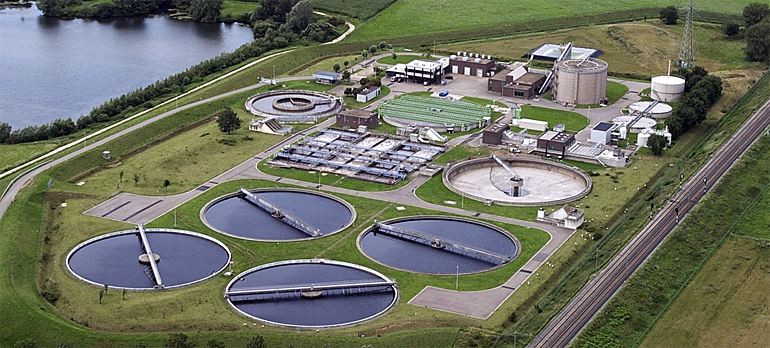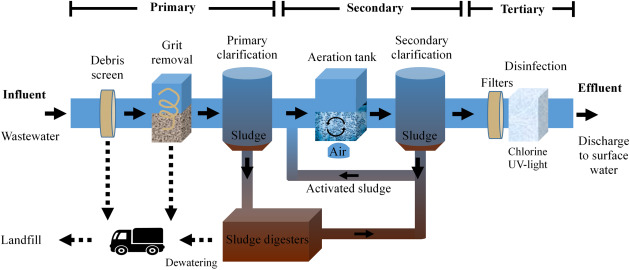Understanding Wastewater Treatment Processes and Their Ecological Effect
The details of wastewater therapy processes play a critical function in mitigating ecological challenges associated with water air pollution. Each phase, from preliminary to innovative therapies, is made to resolve particular contaminants, inevitably safeguarding both public health and wellness and water ecological communities.
Introduction of Wastewater Therapy
Exactly how is wastewater transformed right into a risk-free resource for the setting? Wastewater therapy is an essential procedure developed to remove impurities from made use of water, therefore guarding public health and wellness and safeguarding communities. This process starts with the collection of wastewater from household, commercial, and industrial sources, which is then routed to therapy facilities.
At these facilities, numerous physical, chemical, and biological techniques are employed to deal with the wastewater. Consequently, biological therapies, such as triggered sludge processes, make use of bacteria to break down organic issue.
The treated effluent can be securely released right into natural water bodies or recycled for watering and industrial functions, promoting source conservation. Additionally, the therapy process creates biosolids, which can be repurposed as fertilizers or dirt modifications, additionally improving sustainability.
Stages of Therapy Processes
The wastewater treatment process generally includes 3 primary phases: initial, primary, and second treatment. Each phase serves a distinct role in lowering the contaminant load and ensuring the effluent satisfies environmental standards prior to discharge.

The main treatment stage concentrates on the physical separation of suspended solids from the wastewater. With sedimentation, larger fragments settle at the bottom of sedimentation storage tanks, developing sludge, while lighter products, such as oils and oils, float to the surface area and are skimmed. This procedure substantially decreases the organic and inorganic lots in the wastewater.
Additional treatment is a biological process targeted at more reducing the focus of natural issue. Different techniques, including turned on sludge systems and flowing filters, use bacteria to metabolize organic toxins. This phase is crucial for attaining the required biochemical oxygen demand (FIGURE) decrease, eventually leading to cleaner effluent all set for discharge or more treatment. Each stage is crucial in safeguarding ecological and public wellness.

Advanced Treatment Technologies
Following the additional treatment procedures, advanced therapy technologies play a vital function in further improving the quality of dealt with wastewater. These technologies are made to eliminate recurring pollutants that are not effectively removed throughout primary and secondary therapies, ensuring the effluent meets stringent governing requirements.
Amongst the extensively used sophisticated treatment approaches are membrane filtering, reverse osmosis, and progressed oxidation processes. Membrane filtering, consisting of microfiltration and ultrafiltration, is effective in dividing great particles, microorganisms, and colloids from the water (Wastewater). Reverse osmosis makes use of semi-permeable membranes to remove dissolved solids, causing top quality water appropriate for numerous applications
Advanced oxidation procedures (AOPs) employ strong oxidants to deteriorate natural toxins, consisting of drugs and personal care items that are resistant to traditional treatment. These techniques enhance the biodegradability of complicated substances, facilitating their elimination.
Another substantial technology is making use of biological nutrient removal procedures, which particularly target nitrogen and phosphorus, protecting against find out here now eutrophication in obtaining water bodies. In general, innovative treatment innovations are crucial for attaining greater levels of purification, advertising water reuse, and guarding public health and wellness while attending to the obstacles related to wastewater management.
Ecological Advantages of Therapy
Many ecological advantages arise from efficient wastewater therapy procedures that contribute to ecosystem health and wellness and sustainability. Primarily, these processes significantly minimize the launch of damaging contaminants into natural water bodies, which aids keep water ecological communities. By removing impurities such as hefty metals, nutrients, and virus, dealt with wastewater reduces the risk of waterborne conditions and promotes biodiversity in aquatic atmospheres.
Furthermore, wastewater therapy centers frequently employ innovative innovations that enable water recycling and reuse. This method not only preserves freshwater resources however also lowers the need on all-natural water materials. Enhanced nutrient elimination from wastewater can also protect against eutrophication, a process that brings about algal blossoms and subsequent oxygen deficiency in water systems.
Additionally, efficient therapy processes can decrease greenhouse gas emissions, specifically methane and nitrous oxide, which are commonly released during unattended wastewater decay. By recording and utilizing biogas from anaerobic digesters, centers can transform waste into sustainable power, thus adding to a decrease in fossil fuel dependence.
Challenges and Future Patterns
While the ecological advantages of wastewater treatment are clear, numerous challenges continue that prevent optimal results in this area. One major problem is maturing infrastructure, which often brings about ineffectiveness and increased functional costs - Wastewater. Several treatment plants were designed years ago, and their abilities do not align with contemporary needs, that include more stringent regulatory criteria and higher quantities of wastewater due to read more urbanization

Looking in advance, there is a growing focus on source recuperation and round economic situation concepts within wastewater therapy. Developments such as anaerobic digestion, which can produce biogas, and advanced filtering innovations are obtaining grip. These methods not only boost therapy efficiency but likewise view it promote sustainability.
Inevitably, addressing these obstacles calls for cooperation amongst stakeholders, financial investment in innovation, and a dedication to continuous research. By embracing these patterns, the wastewater treatment sector can progress to satisfy the demands of an altering atmosphere and culture.
Final Thought
In conclusion, wastewater treatment processes play a crucial duty in boosting ecological quality and public health and wellness. The multi-stage therapy structure, paired with advanced technologies, successfully minimizes pollution and advertises lasting water administration.